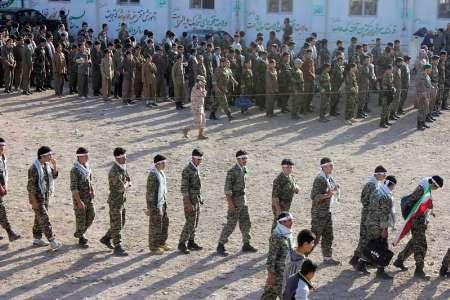The religious fervor that exuded after the 1979 Islamic revolution was breathed in the streets of the new Iran. Like any revolution, it is difficult for everyone to accept the new status quo. Thus were born the Pasdaran, intransigent men who act in the shadow of the government of Tehran to keep the ideology of the Islamic revolution intact. Highly trained and highly trained military whose only task is to blindly obey the Ayatollah Ali Khamenei.
But what do we really know about these much flattered Revolutionary Guards? According to the art. 2 of the second chapter of the Pasdaran Statute of the Islamic Revolution, the role of the IRGC (Iranian Revolutionary Guard Corps) consists in "the legal struggle against the elements or movements that aim to sabotage or dismantle the Republic or act against the Islamic Revolution of Iran" . In addition to art. 3 the mission of the IRGC is described as a "legal clash against the elements that undertake an armed conflict to annul the authority of the laws of the Islamic Republic". It is through these two articles that the IRGCs justify their political role.
After the war between Iran and Iraq began a gradual reorganization of the fighting units. Like any self-respecting special force, it is not given to anyone to know what the real number of service providers is. Estimates speak of 150.000 units but are based above all on rumors. In the 1992 the Islamic Republic decided to unite the Pasdaran staffs with those of the Armed Forces in an attempt to integrate them. The religious fervor of which the pasdaran were the icon risked being a double-edged sword for the strategists of the revolution. Despite the amalgamation, the Pasdaran's numerical and military preparation and intelligence superiority was intuitive. Nevertheless the two bodies kept their mandates: the Armed Forces continued to deal with the conventional defense of the nation while the guards of the revolution focused on internal security and the export of the revolution itself.
As a result of the reform of internal doctrine the Pasdaran have taken on various new forms. One of the countless oddities that make the Revolutionary Guards such a luscious subject are certainly two of its most important components: Basij-e Mustafazin and the Qods forces. The Iranian revolutionary leader, Ayatollah Ruhollah Khomeini, issued a decree to found the Basij, intended as "the great militia of the people", in November 1979. It is said that he had established that "a country with 20 million young people must have 20 million riflemen or a militia with 20 million soldiers; such a country will never be destroyed". At least originally, the Basij was founded for those who could not perform regular military service because they were too young, too old or simply with the wrong sex.
After the Iran-Iraq war, the Basij was reorganized and gradually became one of the first guarantors of the internal security of the Iranian Islamic regime. The Basij catchment area runs through a dense network of mosques that direct younger children to serve the well-being of the Republic. Many subgroups are present in universities and tribal structures. Middle and high schools are not exempt where recruitment is very high. The mission of the Basij as a whole can generally be defined as helping to maintain public order; enforce ideological and Islamic values and the fight against "Western cultural assault". The figures fielded only by the Basij militia are imposing - about 11 million of subjects - to be used as a deterrent for those who would like to loosen the very strict moral protocol imposed by the revolution. [teacher]
(photo: IRNA)












